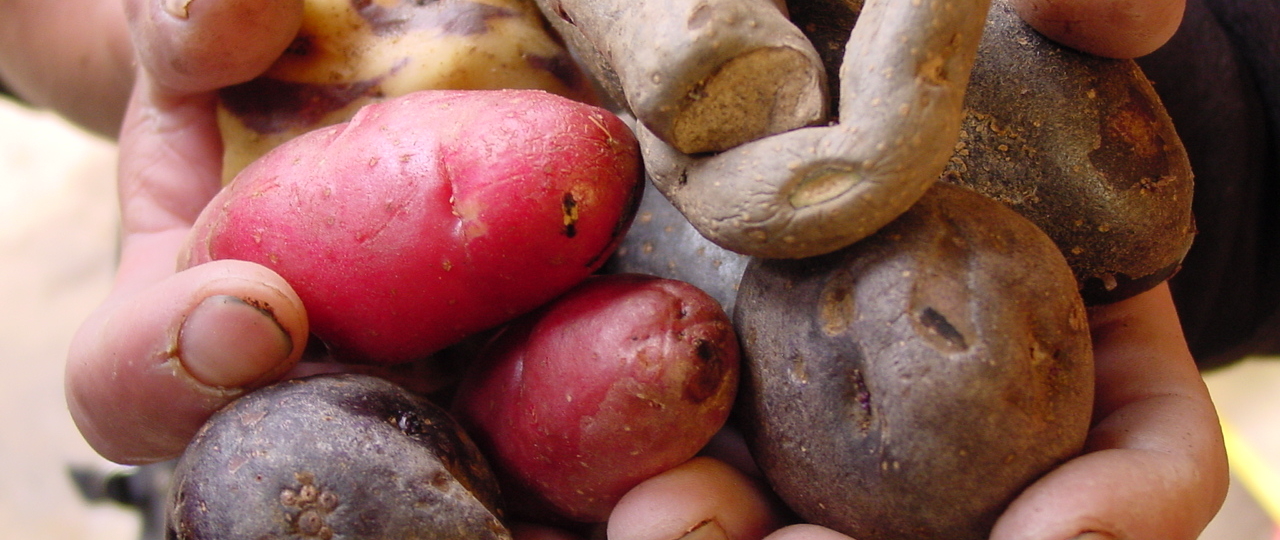
Native potato seed systems
Lead Organization:
International Potato Center
Community of Practice:
Countries:
Peru
Duration:
8/2009—8/2012
Overview:
Potato is the most important food crop in the high Andes. Over 90% of the native potato seed used goes through informal, or peasant seed systems. Because potato can easily be reproduced clonally it can quickly become infested with high levels of disease and pests, which results in lower yields and quality.This project aims to study mixed seed systems and work with farmers to select the best seed possible from the field and storage to improve the quality of informal seed systems as well as examining the interactions between formal and informal systems.The project will study existing seed systems in both Peru and Ecuador, it will adapt a guide on positive selection for potato seed that can be used as part of the informal seed system and disseminate the methodology through local partners in the three countries. It will look and promote ways to connect formal and informal seed systems.
Grant Aims:
To define the importance of pests and diseases and their effect on the quality of potato seed and define those on which positive selection should focus.To determine the benefit of using quality seed produced by trained farmers versus seed produced by non-trained farmers.To characterize existing potato seed systems (with emphasis on native potatoes).To promote public awareness to get acceptance and support for informal and mixed potato seed systems.
Outputs and Outcomes:
Preliminary results on effect of pests and diseases on potato seed (7388 tubers sampled) shows that 60% are healthy to the naked eye.Initial results suggest viruses are not as important as soil borne pathogens.Initial guide on positive selection was well received especially by other donors and institutions who would like to purchase copies and print more.